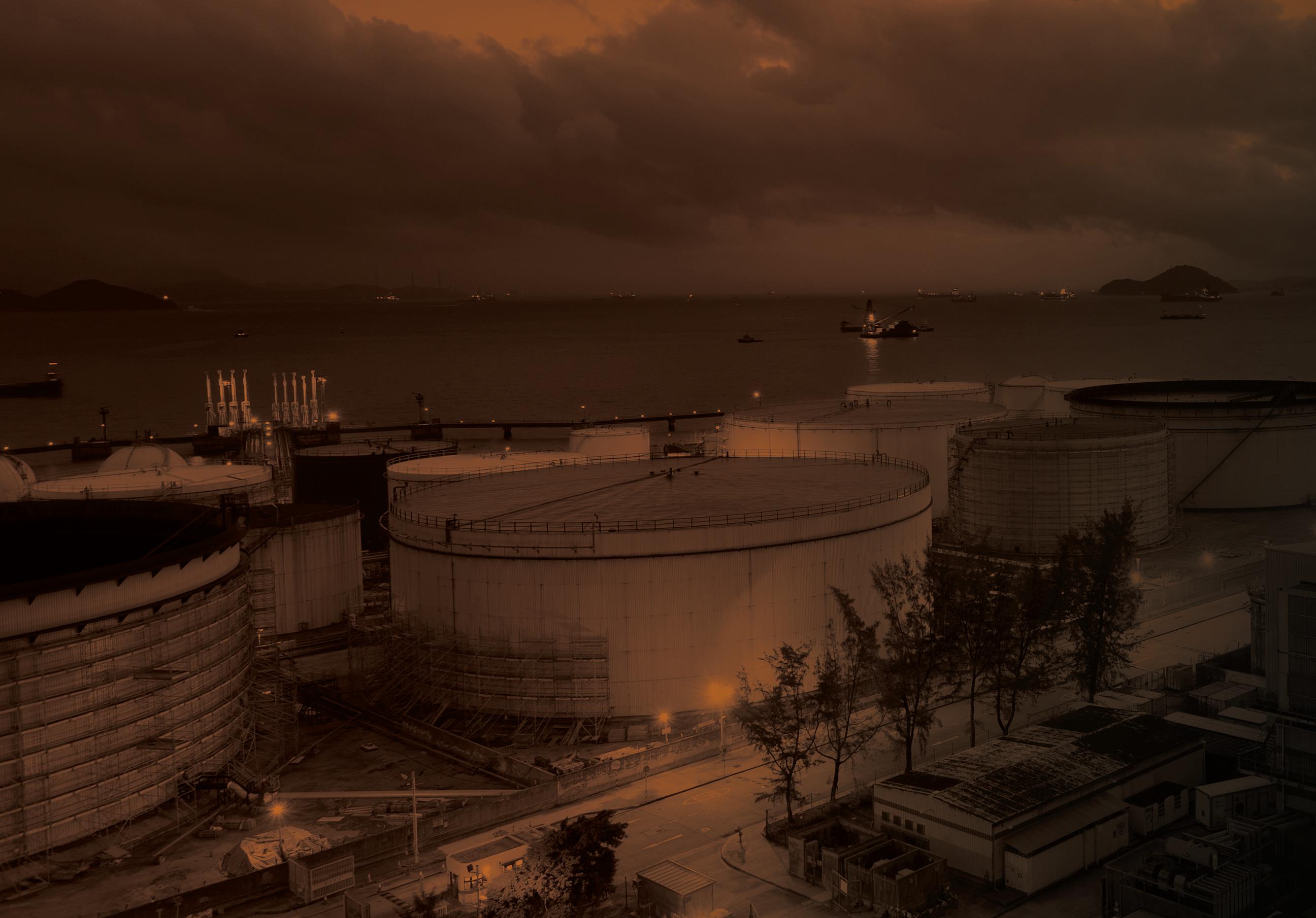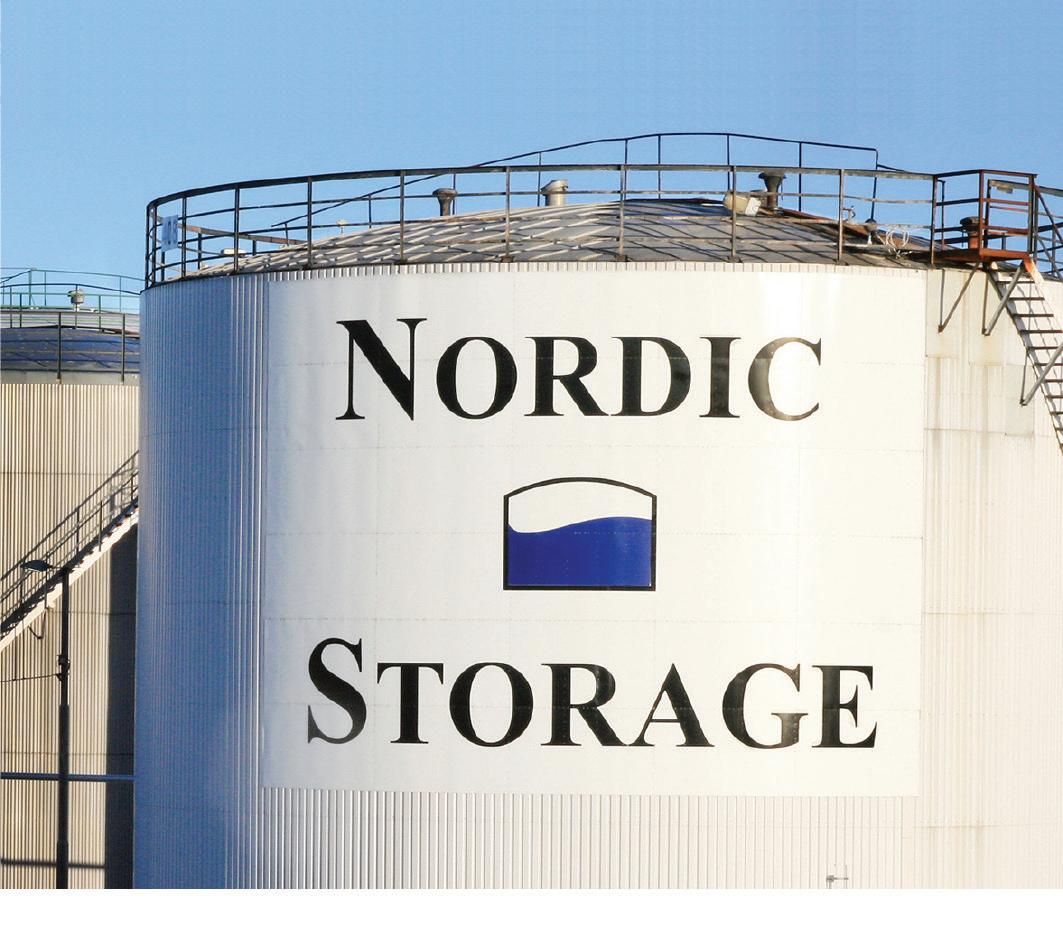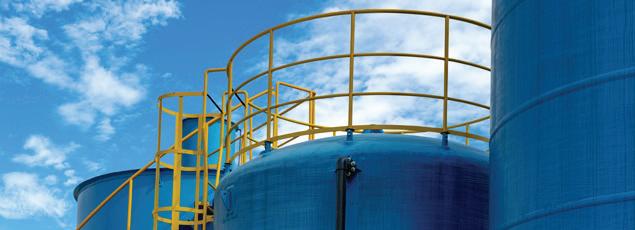
11 minute read
The Americas
TERMINAL NEWS: THE AMERICAS
US
Advertisement
VOPAK’S MODA HOUSTON MARINE TERMINAL IS NOW FULLY OPERATIONAL
Vopak Moda Houston’s marine terminal in the Port of Houston is fully operational. Formed in 2016, Vopak Moda Houston is a joint venture between Royal Vopak and Moda Midstream.
Strategically located in Houston’s refining and petrochemical corridor and in close proximity to multiple ammonia, hydrogen and nitrogen pipelines, Vopak Moda Houston is the first greenfield terminal development in the Port of Houston in more than a decade. Designed to handle very large gas carriers (VLGCs), as well as smaller vessels and barges, Vopak Moda Houston is the only waterborne ammonia terminal in the Port of Houston with deepwater capabilities. The terminal has existing permits for additional berthing positions. Vopak Moda Houston is directly connected via pipeline to the Port of Houston petrochemical complex, the world’s second-largest petrochemical complex and the largest in the US. ‘With the ability to safely and reliably transport ammonia and other pressurised gases for our current and future customers, Vopak Moda Houston is a vital link in the new energy transition supply chain. We are in active discussions with customers to provide logistics solutions for low-carbon products, including storage and handling of green and blue ammonia, hydrogen and lowcarbon bunkering,’ says Moda Midstream CEO and founder Jonathan Z Ackerman, adding: ‘Vopak Moda Houston is well positioned to become the premier lowcarbon ammonia and hydrogen terminal hub on the US Gulf Coast.’ Vopak Americas President Chris Robblee says: ‘This very well fits Vopak’s strategy of developing new infrastructure solutions for products like ammonia.’ Vopak Moda Houston also operates a unit train rail loop served by all three main rail lines. Vopak Moda Houston has completed construction of its rail infrastructure for the storage and handling of pressurised gas for a global energy company.
Specialist Training for the Storage Tank Industry Live online, classroom or e-learning
• Gain or renew your 5-year Certificates of Competence* • Courses based on EEMUA 159 • English, Dutch, German and French language options • Select from courses throughout 2022, including:
TankAssessor courses*
24-28 January 2022 – in English – live online 7-11 February 2022 – in Dutch – live online 28 March – 1 April 2022 – in French – classroom – Près de Paris, FR 4-8 April 2022 – in German – classroom – near Hanover, DE 25-29 April 2022 – in English –classroom – near London, UK 13-17 June 2022 – in Dutch – classroom – near Rotterdam, NL
TankInspector courses*
TankIntro courses
Storage Tanks e-learning
On-demand – in English and in Dutch

More choices, information and registration at www.eemua.org
Above ground flat bottomed storage tanks
A guide to inspection, maintenance and repair
Publication 159
Edition 5
Moving Energy Forward

Individual Solutions for Oilfield Pump Systems
As an expert manufacturer of downhole and surface pumps, we produce oilfi eld pump systems according to the highest quality standards. The viscosity of oil or its percentage of gas or sand makes no di erence to the NETZSCH positive displacement pumps. The multiphase fl uid boosting solutions take the pressure o the well and support the transfer over long distances.
www.netzsch.com
Ecuador
PETROECUADOR AND PRIMAX SIGN PETROLEUM LOGISTICS CONTACT
Ecuador’s state oil company Petroecuador has signed a 15-year contract with fuel distributor Primax for the receipt, transport, storage and dispatch of petroleum products.
Petroecuador’s Esmeraldas, La Libertad and Tres Bocas oil docks will be used for the contract, along with associated terminals, pipelines and refineries. The contract forms part of the Ecuadorean government’s strategy, outline in Decree 95, to open up the Ecuadorean fuel market and allow the delivery of better-quality fuel. Fee collection will be carried out by Ecuador’s Agency for the Regulation and Control of Energy and Non-Renewable Natural Resources, according to the general manager of Petroecuador, Pablo Luna. He added: ‘There is a different rate for the use of each infrastructure segment, which in turn allows Petroecuador to charge differently. Additionally, there is the option of the single rate of US$0.027665 [€0.025] per gallon, which will be applicable as long as the distribution of the product is complied with in all the terminals that were considered for setting the rate.’ Petroecuador also has similar contracts in place with Corpetrolsa, Terp el- Comercial Ecuador CIA, Servicios WFSE Ecuador and Duragas.
US
US RELEASES 50 MILLION BBL OF CRUDE FROM SPR
The US Department of Energy (DOE) will release 50 million bbl of crude oil from the US strategic petroleum reserve (SPR) in an effort to reduce oil prices and address supply shortages.
US president Joe Biden ordered the release of up to 50 million bbl of oil from the US SPR, after a request to OPEC and Russia to increase oil production was refused. Several other high energy consuming nations, including China, India, Japan, South Korea and the UK also agreed to release oil from their SPRs. Oil prices had risen to their highest level for seven years after demand outstripped supply. Prices have since begun to drop, but the US is pressing ahead regardless. Initially, 32 million bbl will be made available from the SPR’s four salt cavern storage sites. Big Hill and Bryan Mound in Texas will each release 10 million bbl, while in Louisiana, 7 million bbl will be released from West Hackberry and 5 million bbl from Bayou Choctaw. The oil will be released on an exchange basis, whereby companies receiving oil will have to return it at a future date when oil prices are expected to be lower. The mechanism acts as a bridge from higher to lower prices. In this case, oil must be returned in 2022, 2023 and 2024. Deliveries will take place from January-April 2022. The first exchange, of 4.8 million bbl, will go to ExxonMobil. Delivery will be conducted from the Bryan Mound, West Hackberry, and Bayou Choctaw SPR sites. The DOE will continue to accept bids from interested parties for the additional barrels authorised for exchange. Additionally, 18 million bbl of oil was put up for sale in December 2021. Biden says that he will take additional action if necessary, and has asked the Federal Trade Commission to investigate oil and gas markets to find out if ‘illegal conduct’ means lower oil prices are not passed down to domestic customers. Many analysts are warning this could mark the beginning of a new power struggle in the global oil markets.
US
VENTURE GLOBAL TO BUILD FOURTH LOUISIANA EXPORT FACILITY
US company Venture Global LNG is to invest more than US$10 billion (€8.9 billion) in developing its fourth LNG export facility in Louisiana, US.
The new facility will be known as CP2 LNG and will be located in Cameron Parish, adjacent to Venture Global’s existing Calcasieu Pass LNG terminal. It will have a nameplate liquification capacity of 20 million tpa of LNG, and will be supplied with natural gas by the CP Express pipeline. Ventrual Global has submitted a formal application to the Federal Energy Regulatory Commission (FERC) to build and operate the facility. Venture Global announced the news alongside Louisiana Governor John Bel Edwards. CP2 LNG is expected to generate US$2 billion in local revenue and create thousands of new jobs with an average salary of US$120,000. The company’s total planned capital investment in Louisiana now amounts to more and US$20 billion.

US
NOLA STARTS WORK ON NEW MISSISSIPPI RIVER WHARF
Nola Oil Terminal, in Plaquemines, Louisiana, US, has begun construction work on phase one of its 10 million bbl oil and refined products terminal on the Mississippi River.
The terminal will be the first in the region capable of handling the New-Panamax and Suezmax vessels, up to 366 m long and up to 170,000 DWT. The waterside works which make up phase one comprise two deepwater docks and a barge dock, which will serve both inland and oceangoing tank barges. The second phase of the project will be the landside works, which includes storage, blending and transferring facilities. Alongside the prime location, the facilities will offer added value to clients. After completion, which is expected in mid-2022, the terminal will be able to handle up to six tankers per week. All required permits are in place, and site preparation, such as site clearing, open channel drainage, construction access roadways, geotechnical investigations, pile load tests and environmental studies, has been completed. The US$300 million (€266 million) wharf and dock bond funding for the project was approved in mid-2021. It is the largest bond issue approved by the Port of Plaquemines in more than 50 years. In total, the Nola Oil terminal will cost US$930 million. fuels, compliant with US and European standards for sulphur, particulates and NOx, to the Mexican market,. Now, increasing tenant demand means that GSEO needs to increase the throughput and on-site blending capacity of one of those terminals. The company will add 340,000 bl of tank storage capacity, taking the total capacity across the two terminals to 865,000 bbl. It will increase the rail car unloading capacity, and increase the draught of the liquid cargo dock, allowing the dock to accommodate larger ships. Motus Energy, which operates the terminals on behalf of GSEO, will carry out and oversee the works, which will take place over the next year. Once the works are completed, GSEO’s total investment in the two terminals will total US$96 million.
US
COLOMBIA EXPANDS OKIANUS TERMINALS
Colombia’s Ministry of Mines and Energy has begun expansion works at Okianus Terminals in Cartagena, Colombia, for imports of LPG.
The terminal currently has a capacity of 32,000 m3, or 400,000 gallons (1.51 million L) and handles chemicals, vegetable oils and hydrocarbons, as well as LPG. The phase II expansion works will increase the storage capacity to 1.4 million gallons. Additionally, the number of tanker truck loading positions will increase from five to 10. The works will be carried out by Okianus Terminals and the G5 Consortium, which comprises Norgas, Chilco Distribuidora de Gas y Energía, Vidagas – Empresas Gasco, Almagas and Montagas. Alejandro Martínez Villegas, president of the Colombian LPG Association (GASNOVA), says that the expansion works will guarantee Colombia’s national supply of LPG. The new capacity will allow monthly imports of up to 16,000 tonnes of LPG.
Where do you want to store next?
Call us for storage of petroleum products and chemicals in Europe. Our experience is your guarantee.
US

GSEO TO SPEND US$35 MILLION ON US TERMINAL UPGRADES
UK investment company VH Global Sustainable Energy Opportunities (GSEO) has committed US$35 million (€31 million) to expand one of its terminals in Texas, US.
GSEO bought two terminals in Texas in May 2021, to supply less-polluting Phone HQ: +46-31 53 45 00 Phone Operations: +46-31 764 96 00 Email: info@nordicstorage.se Website: www.nordicstorage.com
Mexico
MEXICO BANS TRANSLOADING AWAY FROM CUSTOMS POINTS
Mexico’s customs agency has banned the transloading of imported fuel at sites not designated as standard customs points.
Under Mexican customs law, imports are allowed at one of 49 government authorised customs points, although permits may be requested to import into other sites, known as a lugar distinto al autorizado (LDA). The new rules affect only LDAs. According to Argus Media, imported refined and blended products cannot be put directly into tank trucks or tankers, but must go through pipelines or storage, when at an LDA. Transloading has become common in Mexico, particularly inland, where tanks were still under construction. Mexico has limited numbers of fuel pipelines, most owned by state oil company Pemex. One lawyer, Diego Campa, told Argus that the new ruling will affect all companies that have not contracted fuel storage. The Mexican government has recently introduced a number of restrictions on private-sector fuel importers aimed at preventing imports without the participation of Pemex or CFE, another state company. With the Mexican government having previously attempted to increase competition for the two state energy companies, the current administration is introducing reforms to protect them. Eduardo Lopez, an independent oil market economist in Mexico City, recently looked at the implications of the reforms for importers in an article for Tank Storage Magazine, available of p36 of the 2021 North American issue. In addition, Argus Media reports that in November 2021 Mexico’s energy regulatory commission has closed a 690,000 bbl fuel storage terminal in Salinas Victoria, Nuevo Leon, that serves ExxonMobil and other brands, and a transloading terminal in Nuevo Leon used by Valero, apparently because it was using rail cars as storage units. It also closed a 650,000 bbl storage terminal in Puebla and Monterra Energy’s 2.2 million bbl fuel storage terminal near Tuxpan.

SAVE VALVE OPERATION
Electric actuators for all types of industrial valves Reliable and long-term service. AUMA offers a comprehensive portfolio. Q Customised solutions thanks to the modular scheme Q Corrosion protection with offshore certification Q Temperatures up to +75 C, down to –60 °C Q Integration into all conventional distributed control systems Q Worldwide certifications and vendor approvals Q Service worldwide

Discover our solutions for the oil and gas industry www.auma.com





